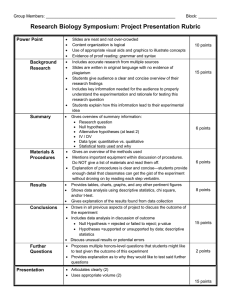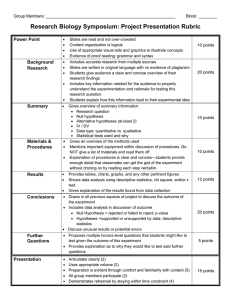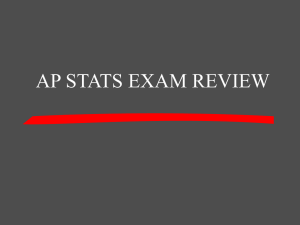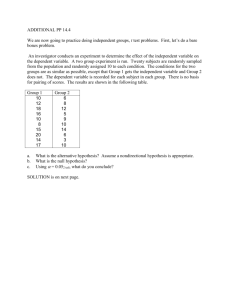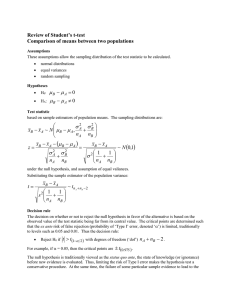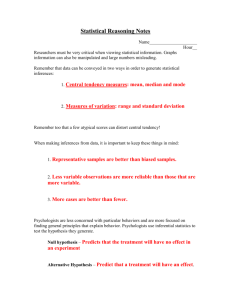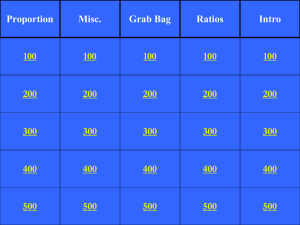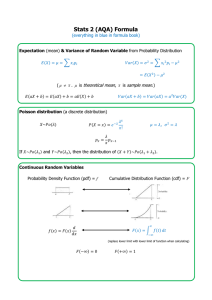Step 1: Set up null and alternative hypotheses, since the alternative
advertisement
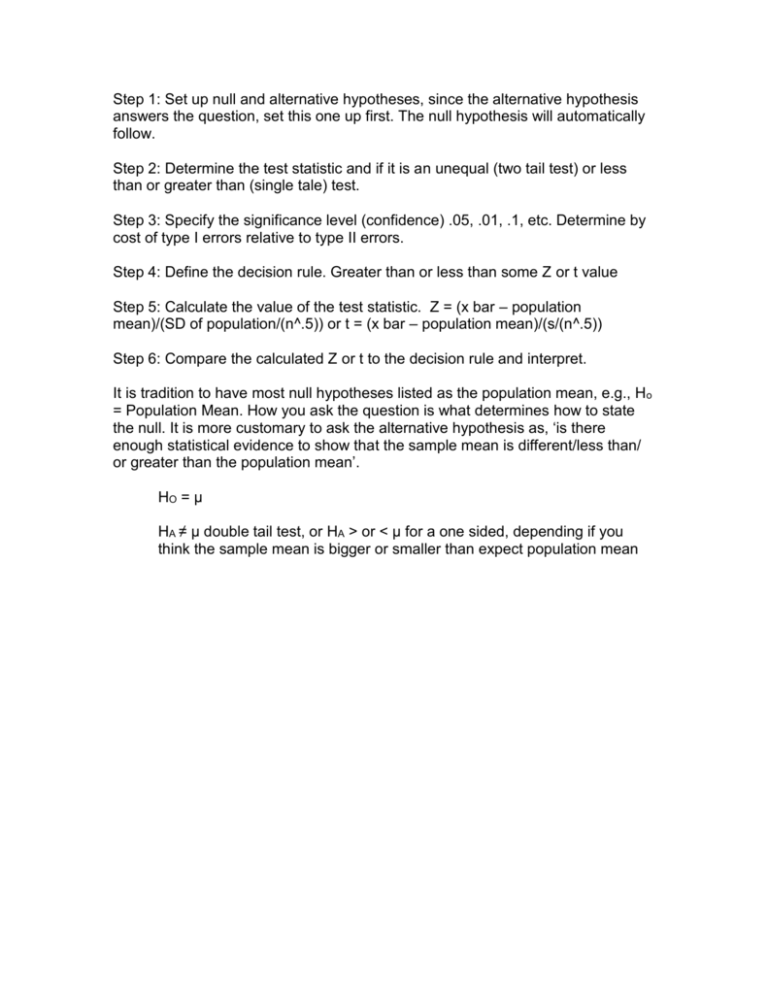
Step 1: Set up null and alternative hypotheses, since the alternative hypothesis answers the question, set this one up first. The null hypothesis will automatically follow. Step 2: Determine the test statistic and if it is an unequal (two tail test) or less than or greater than (single tale) test. Step 3: Specify the significance level (confidence) .05, .01, .1, etc. Determine by cost of type I errors relative to type II errors. Step 4: Define the decision rule. Greater than or less than some Z or t value Step 5: Calculate the value of the test statistic. Z = (x bar – population mean)/(SD of population/(n^.5)) or t = (x bar – population mean)/(s/(n^.5)) Step 6: Compare the calculated Z or t to the decision rule and interpret. It is tradition to have most null hypotheses listed as the population mean, e.g., Ho = Population Mean. How you ask the question is what determines how to state the null. It is more customary to ask the alternative hypothesis as, ‘is there enough statistical evidence to show that the sample mean is different/less than/ or greater than the population mean’. HO = μ HA ≠ μ double tail test, or HA > or < μ for a one sided, depending if you think the sample mean is bigger or smaller than expect population mean

